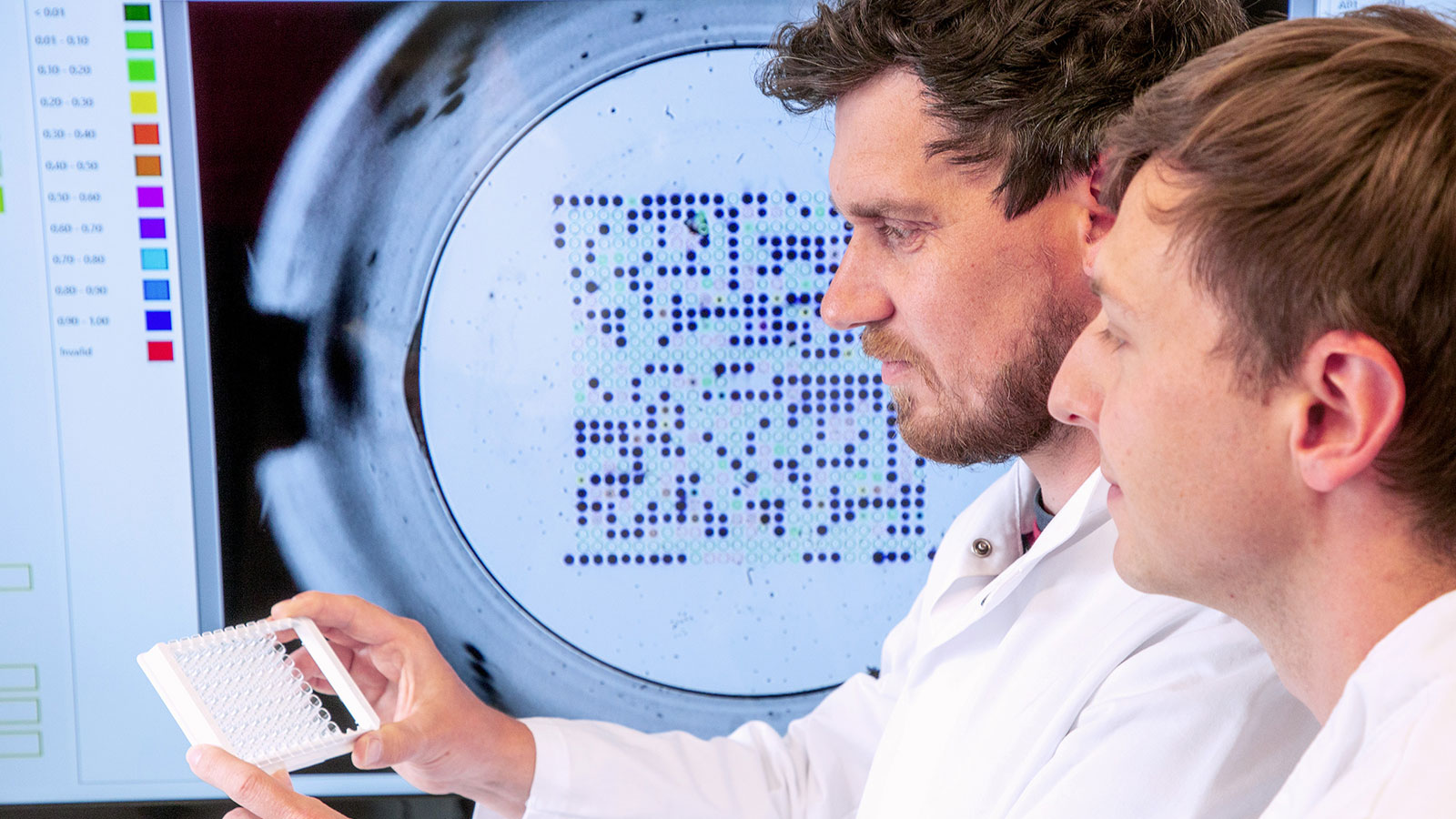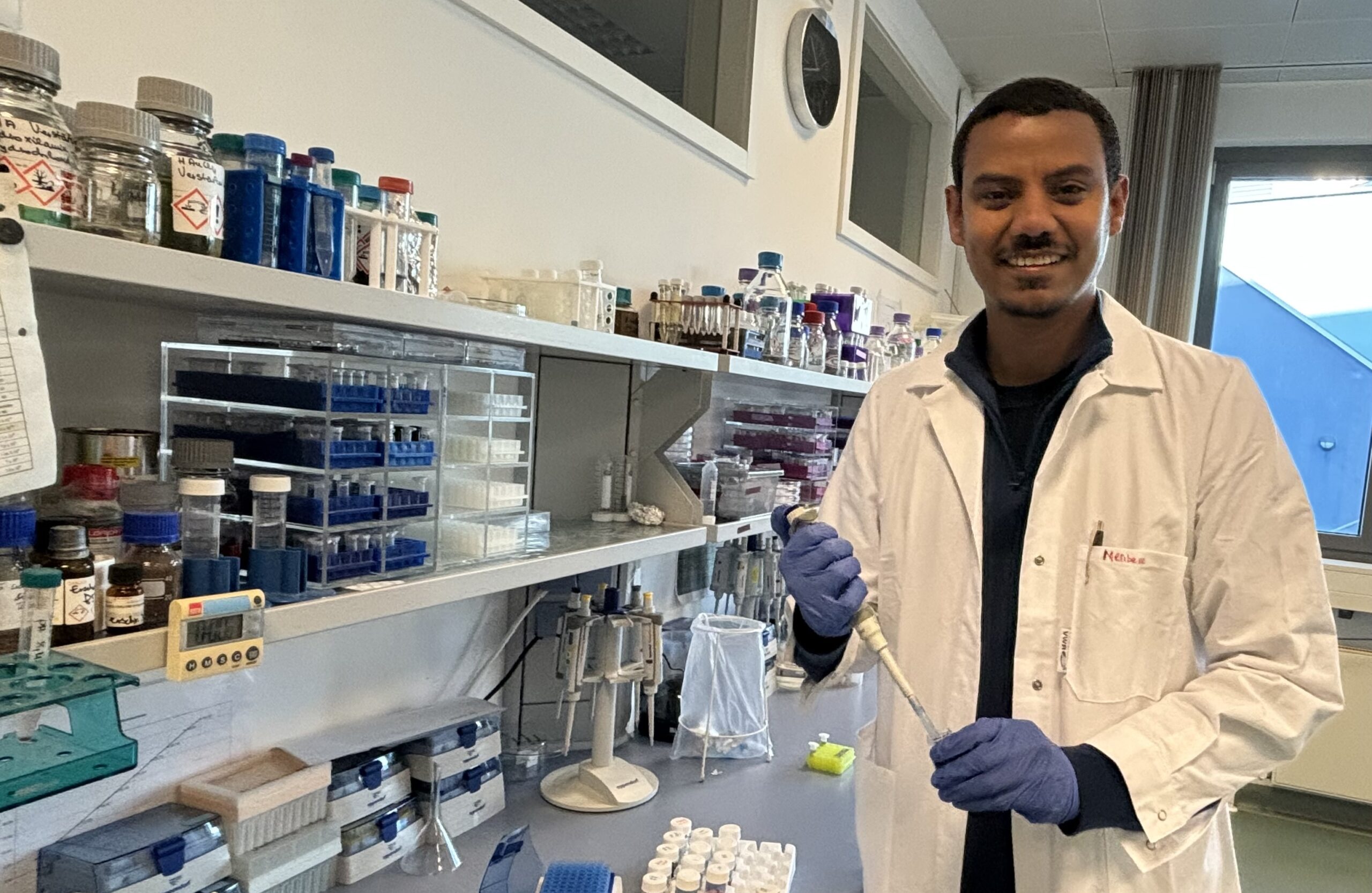Identifying bacteria: New test reliably detects pathogenic germs

Thuringian researchers, with the participation of Leibniz IPHT at the InfectoGnostics research campus, have jointly developed a test that can detect genetic characteristics of the bacterium Staphylococcus aureus and distinguish between more than 700 strains of this pathogen. Virulence factors and resistance genes, including those of multi-resistant variants (MRSA), can be quickly identified with the test kit. The INTER-ARRAY Genotyping Kit S. aureus is already available and is used in clinical research projects.
Genetic analyses are becoming increasingly important in diagnostics and research into infectious agents. They can be used to track the spread of bacterial strains in hospitals and to analyse their resistance or virulence genes. For a complete sequencing of the genetic material of the pathogens, expensive equipment and complex bioinformatic data evaluation are necessary. This limits the possibilities of application, because especially in the case of resistant pathogens, rapid action in hospital hygiene is crucial. With the INTER-ARRAY Genotyping Kit S. aureus, researchers from fzmb GmbH, Research Centre of Medical Technology and Biotechnology, together with scientists from Leibniz IPHT have now developed and brought a new microarray test kit onto the market, which in many cases represents a cheap, fast alternative and useful supplement to sequencing.
In the new test kit, bacterial genes are detected using the microarray hybridization method, which has already been tried and tested at the InfectoGnostics research campus: several capture molecules are applied to a biochip in a very small space, to which DNA fragments from a bacterial culture can bind. If such a binding occurs, the corresponding field on the chip changes the colour and can be read optically. Based on the resulting patterns, the researchers know immediately which genes are present. Like a genetic fingerprint, this information can be used to determine, for example, whether several isolates from an intensive care unit are identical, which could mean an outbreak.
Virulence and resistance determination: 336 DNA sequences from 170 markers
“We use the kit to test for 336 DNA sequences of 170 relevant markers, giving us an accurate indication of the presence of virulence factors and resistance genes. By combining this genetic information and matching it with an extensive database, we can distinguish and epidemiologically track over 700 strains of Staphylococcus aureus,” explains biotechnologist Katrin Frankenfeld, Chief Operating Officer for INTER-ARRAY at fzmb GmbH.
The company cooperated with InfectoGnostics researchers Prof. Dr. Ralf Ehricht and Dr. Stefan Monecke from the Optical Molecular Diagnostics and System Technology Department at Leibniz IPHT in the selection of the target genes and sequences as well as the construction of the database of strains. “With the test, a Staphylococcus aureus germ can be extensively characterized molecularly in a relatively short time. Especially in hospitals, where outbreaks of infections with Staphylococcus aureus pathogens can occur, infection chains can be analyzed quickly and the causes of outbreaks can be identified. Infections with Staphylococcus aureus can have serious consequences, can sometimes be life-threatening, and repeatedly lead to outbreaks. With the information gained, doctors can make hygienic decisions more quickly and better identify and combat the causes of outbreaks,” explains Prof. Dr. Ralf Ehricht, who is working with his team at Leibniz IPHT on state-of-the-art technologies and a better understanding of infectious diseases as well as faster diagnostics.
Thanks to the public-private cooperation in the research campus, the INTER-ARRAY genotyping kit could already be used at the end of 2021 for the validation of a rapid test for the detection of the bacterial toxin PVL.
Major advantages of the microrarray system are its high scalability and easy adaptability, as Katrin Frankenfeld from INTER-ARRAY at fzmb GmbH explains: “We can arrange several of these microarrays next to each other as a high-throughput format and thus simultaneously test up to 96 isolated pathogens from samples. In the future, it will also be possible to design new kits with DNA sequences for further markers or even for other species, making the system flexible for scientific research and for hospital hygiene concerns.”
About the InfectoGnostics Research Campus Jena
The InfectoGnostics Research Campus Jena is a public-private partnership breaking new ground in the diagnostics of infections and pathogens, such as viruses, bacteria and fungi. InfectoGnostics is funded by the Federal Ministry of Education and Research (Bundesministerium für Bildung und Forschung, BMBF) under the funding initiative “Research Campus – Public-Private Partnership for Innovation” with additional support from the state of Thuringia. About half of the required budget is financed by the participating partners. www.infectognostics.de
Further information regarding the INTER-ARRAY Genotyping Kit S. aureus: www.inter-array.com
In the picture:
Scientists at fzmb GmbH look at several INTER-ARRAY chips. In the background, such a microarray can be seen in close-up during evaluation. ©fzmb/InfectoGnostics


